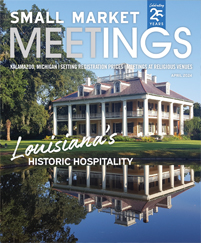Belmont Hall
Smyrna, Delaware
Belmont Hall in Smyrna, Delaware, is nearly as historically important as the man who built it. Thomas Collins completed construction on the Georgian-style brick house in 1773, just in time for both to serve important roles in the state’s — and the country’s — future.
In 1776, Belmont Hall became the first meeting place of the state legislature when Collins invited the Delaware General Assembly to meet there because Tory and British hostilities made New Castle, the state’s capital at the time, too dangerous. From 1772 until the federal Constitution was adopted, Belmont Hall was the scene of many meetings where important Revolutionary players and Founding Fathers gathered, including John Dickinson, Thomas McKean and Caesar Rodney.
Like most historic homes and mansions, the interior comprises many rooms. The mansion can accommodate about 25 people in any one room, up to 35 if guests are seated in a theater-style arrangement. Mix-and-mingle events and receptions that use the whole house can have up to about 60 people, said Susan Wolfe, a member of the Friends of Belmont Hall Board.
The house sits on 25 acres and is surrounded by gardens and grounds that can be used for events for up to 150 people, she said. Historic trees cover the property, and guests will find flower beds and hanging plants.
“It’s very lovely,” Wolfe said.
Group tours are also available for up to 25 people, which guides would split into smaller groups, “which makes it more intimate, so people can ask questions,” she said.
Gunston Hall
Mason Neck, Virginia
George Mason — George Mason IV, technically — was a delegate to the U.S. Constitutional Convention in 1787 and was, famously, one of only three who refused to sign the Constitution. In addition to being one of the Founding Fathers, Mason is deemed the father of the Bill of Rights because of his writing of the Virginia Declaration of Rights.
Mason built Gunston Hall, a home that he planned as the “family seat” for his heirs. After the red-brick, Georgian-style mansion was completed in 1759, it remained largely unchanged as it passed from owner to owner until the Commonwealth of Virginia took it over in 1949. Because it has been so well preserved, the house is a sort of time capsule of the 18th century, and the number of Mason furniture pieces still inside give visitors a glimpse of what the home looked like when the he and his family lived there, until 1792.
Inside the Visitor Center, groups can explore exhibits that highlight details about Mason’s political career and civic involvement, along with information about his personal life. Just east of the main house, guests will find several reconstructed outbuildings that depict 18th-century plantation life, such as the kitchen, the dairy, the smokehouse and the laundry. Visitors can also stroll the grounds, which feature a central boxwood “allée” — believed to have been planted during Mason’s time there — and the Mason family cemetery.
Although no events are allowed inside the main home, groups can gather in the Ann Mason Room in the Visitor Center and use the adjoining private courtyard and grounds for events of up to 150 people. Guided tours are offered daily every 30 minutes, and groups can arrange for private tours.











